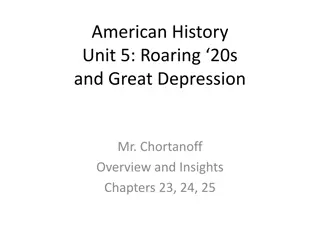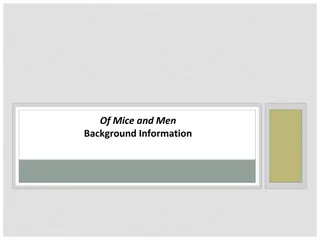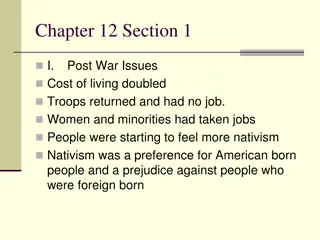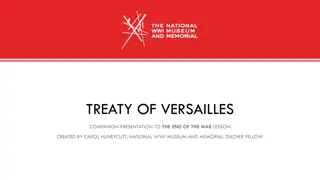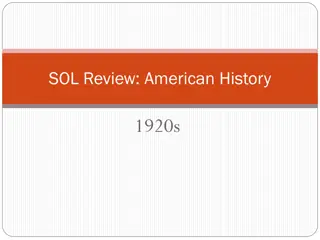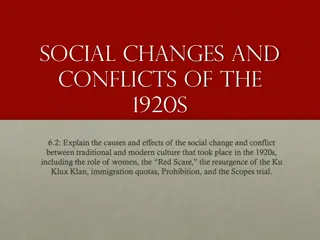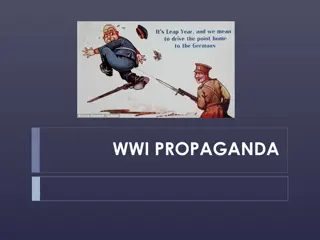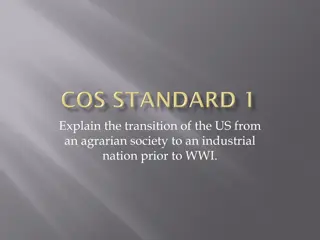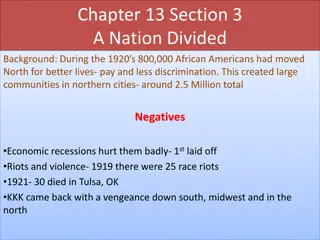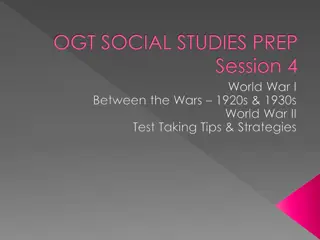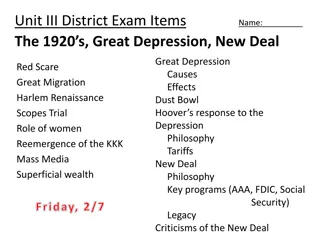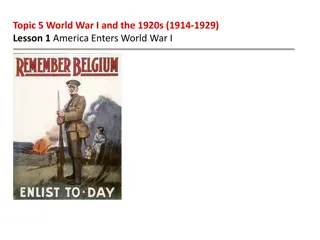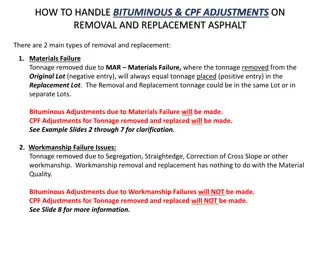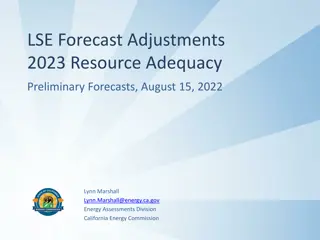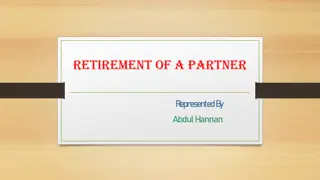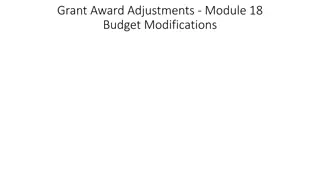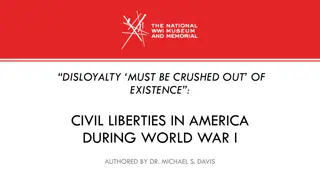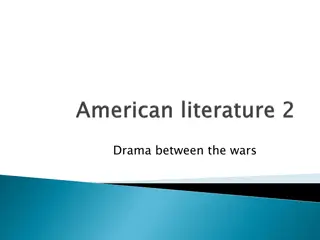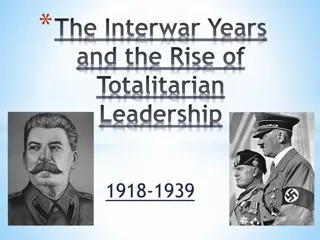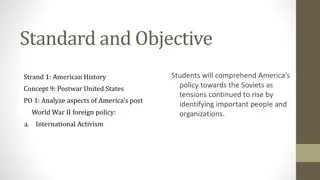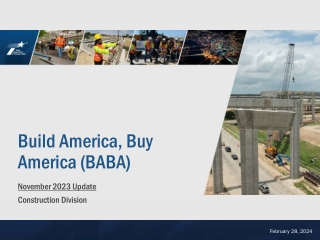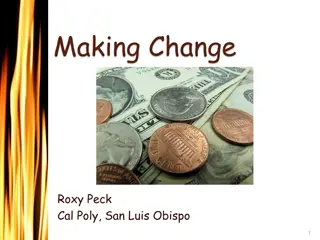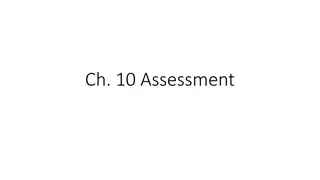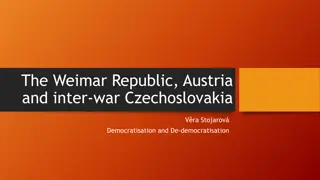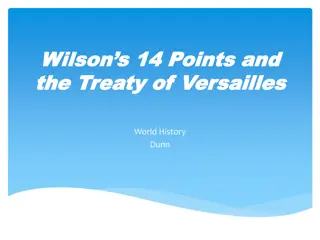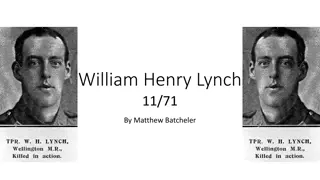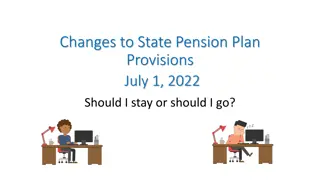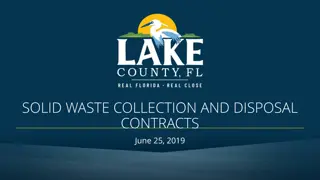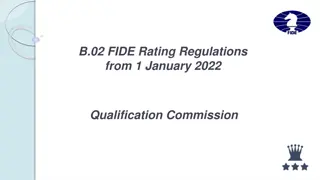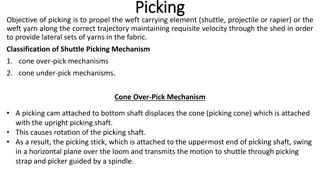America in the 1920s: Post-WWI Adjustments and Challenges
America faced significant adjustments and challenges in the immediate post-World War I period of 1919-1921. The country grappled with issues like disillusionment with foreign affairs leading to isolationism, economic recession due to returning soldiers and reduced demand for war supplies, the rise of isolationist President Warren Harding, the Red Scare fueled by fears of communism, and the controversial Palmer Raids targeting suspected subversives. These events shaped the American landscape of the 1920s.
Download Presentation

Please find below an Image/Link to download the presentation.
The content on the website is provided AS IS for your information and personal use only. It may not be sold, licensed, or shared on other websites without obtaining consent from the author. Download presentation by click this link. If you encounter any issues during the download, it is possible that the publisher has removed the file from their server.
E N D
Presentation Transcript
Adjusting to Peace After WWI 1919-1921
What do you know about the 1920s? No talking, just think in your head and create a list Ready? Write down anything you kinda sorta think maybe might have happened in the 20 s
Immediate Post-War Issues The Great War is over, what now? Americans are disillusioned with foreign affairs What do they do? Why, they return to isolationism, of course!!!!
Immediate Post-War Issues Economically soldiers come back and need jobs, no more need for war supplies, factories close farmers don t have armies in Europe to feed What happens when there are no jobs and no one to sell things to? Recession (economic downturn) 1919-1921
Immediate Post-War Issues Politically Time for a new President Republican Warren Harding is elected in 1920 Read the bottom of p. 174 List the ways that President Harding justifies returning to isolationism.
Red Scare In 1917 the Russian Czar was overthrown Who s seen Anastasia ? Later that year, Communists seized power What does a good Communist do? Seek more power! They threatened to spread their revolution It started in the US in 1919 Sorry to ruin the story, but she actually died with the rest of the family And what did our fine citizens do? People freaked Red Scare created a panic
Red Scare In January 1919 Italian anarchist sets off bomb Where you ask? Outside US Attorney General Mitchell Palmer s house This was one of several in 8 American cities All attacks on judges, politicians, law enforcement Whatever should be done? Hmm Lets think, what happened after 9/11? We changed laws and started gathering up terrorists
Red Scare Palmer Raids Palmer was convinced there was a plot to overthrow the US gov t In 1920 he ordered round-up of 4,000 suspects In several cities WITHOUT warrants Directed by J.Edgar Hoover, his assistant Most released later, but 600 deported
Red Scare Sacco and Vanzetti Case Nicola Sacco & Bartolomeo Vanzetti Italian immigrants Convicted of murder during a robbery Robbery supposedly to get funds for anarchist revolution World demanded their release Did we release them? Of course not! We can t look weak! With insufficient evidence, they were convicted and executed Modern science says Sacco was probably guilty, but not Vanzetti
Red Scare Sacco and Vanzetti Case Your turn to think It shouldn t hurt too bad Oh, but you do have to write Given the situation of fear and panic, do you think Sacco and Vanzetti got a fair trial? Why or why not?
Rise of Nativism and Racism Oh My.mp4 Red Scare, bombings, and trials, Oh My Red Scare, bombings, and trials, Oh My Red Scare, bombings, and trials, Oh My I am afraid, who should I blame? Foreigners! Nativists(think they re native and don t like foreigners) Believed White Protestant Americans were superior Eventually leads to immigration restrictions
Rise of Nativism and Racism Ku Klux Klan (KKK) Had been dead for decades Comes back in 1915 Why? What changed? Where were most African Americans before the war? After? Racial tensions in cities grew after the war Major race riots in cities Lynching continued and segregation in the South Did the KKK only target non-whites? Nope, they pretty much didn t like anybody unless you were white, protestant, & native They harassed: immigrants, Catholics, and Jews too


